Augmented Scale Reality
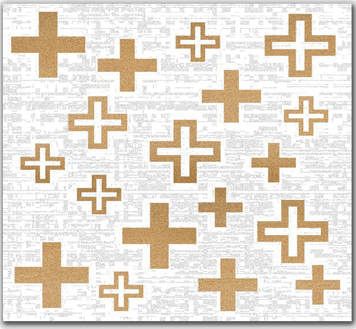
Considering that the previous Shortbook™, "Changing Trane's" was also 100+ pp - could this possibly mean more bang for the buck?
Judging from the quality and quantity of the material in this book, I'd say that's a reality!
So here's a taste of "Reality" by way of the book's introduction, including several notation and audio examples:
The six note (hexatonic) symmetrical “Augmented Scale” has been, historically speaking, somewhat of an enigma to practitioners of modern improvised music. While it has shown up in the works of several noted late 19th, as well as early 20th century classical composers, noted examples of its usage in jazz have been limited to but a handful of the most common “cliches”.
Ethereal, mysterious or enigmatic? These terms have been commonly used to describe the sound and feel of the Augmented Scale, most likely due to the unsettled, symmetrical nature of the Augmented Triad itself.
Unlike its symmetrical cousins, the Diminished and Whole Tone Scales – the Augmented Scale possesses no tritone, making its tendency toward traditional resolution potentially vague.
Although the Augmented Scale possesses these somewhat ambiguous qualities, it nevertheless has a strong melodic and harmonic character, unique to itself. Its successful usage takes a certain amount of practice and patience, before one can “hear” the scale in context with the usual Major and minor harmonic systems. That's where the exercises in this book come in.
The formation of the Augmented Scale can be broken down in the following ways:
Augmented 2nd – semitone (-2nd) / aug. 2nd – semitone / aug. 2nd – semitone //
This configuration can be flipped, and is known as the inverted (aka auxiliary) Augmented Scale. Conversely, there two different Augmented Scale possibilities for each note of the chromatic scale.
An Augmented Scale can also be viewed as:
2 Augmented Triads (triad pair), either an aug. 2nd (min. 3rd) or half step (min. 2nd) apart.
3 Major triads, a Major third apart (C-E-G, E-G#-B, Ab-C-Eb, spelled enharmonically).
3 minor triads, a Major third apart (C-Eb-G, E-G-B, Ab-B-Eb).
1 Maj triad & 1 min triad (triad pair) a Maj 3rd below (or min 6th above it) (C-E-G & Ab-B-Eb).
Exercises and sequences are also included for the four note Major 7th Chords (C-E-G-B), Major 7+5 Chords (C-E-G#-B), minor (Maj7) Chords (C-Eb-G-B), as well as a Maj #9 (E-G-C-Eb) configuration. Clickable links to their respective pages can be found in the Table of Contents.
In fact, both of these scale systems share two crucial 4 note configurations, with a common Aug. triad:
the Maj7+5 (Eb-G-B-D in C Melodic Minor as well as the Eb,G & B Augmented systems) and
the min (Maj7) (C-Eb-G-B in C Melodic Minor as well as C, E & Ab Augmented).
Attention should be paid to avoiding, or at least not accenting, non-chord tones, such as F# (from the G Aug. Scale) on a G7 chord, except as a passing or approach note. Enough conscious practice should make this a routine habit, but it all depends on what sounds “good” to you. The examples here were meant to sound as consonant as possible, which is neither “good” nor “bad”.
The exercises and sequences found in the following pages have been organized according the inherent interval, triad and seventh chord configurations which make up the Augmented Scale system.
It is of course, of primary importance to be familiar with the scale itself, so checking out the basic sequences & motifs beginning on p. 1 is probably a good idea, even if it's only to review. However, one should not hesitate to explore the other chapters at any point.
The goal here is to internalize the different shapes and configurations of the Augmented Scale in sound and feel so that one is eventually comfortable enough to know instinctively which scale sounds best over a particular chord type, and how it might be resolved.
Since the connection should be an obvious one, this book would not have been complete without some mention of the Cycle of Descending Major Thirds (aka “Coltrane Changes”), so I included a page of sequences taken from my previous Shortbook™ “Changing Trane's”, which is tweaked a bit and presented in the key of C only.
The Augmented Scale, as John Coltrane said of his Descending 3rds Cycle, is a device that can take one “out of the ordinary path”; and like a strong spice, is most tasty and effective when combined in the “right” dosage with material from the other scale systems.
You're the chef, so that “dosage” is, of course, completely up to you!
Happy cookin'!


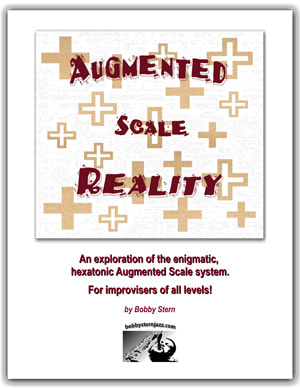
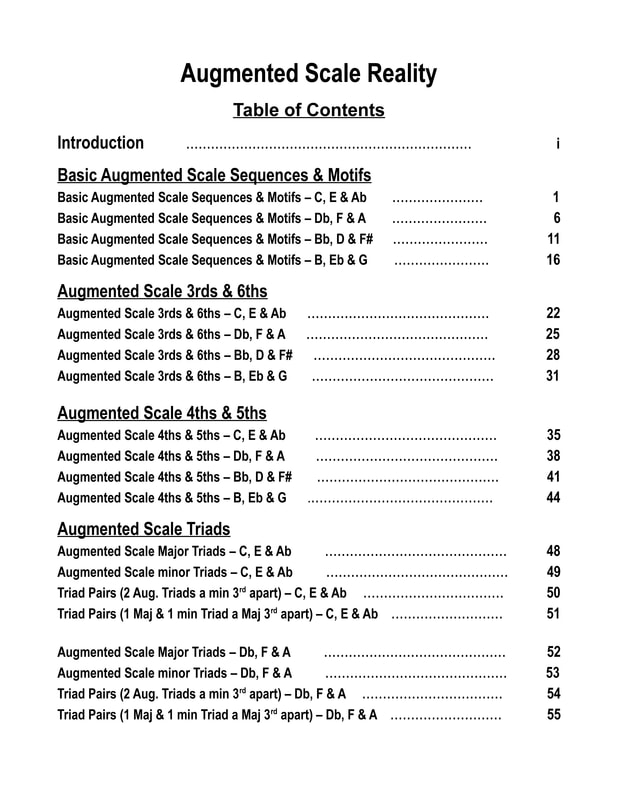
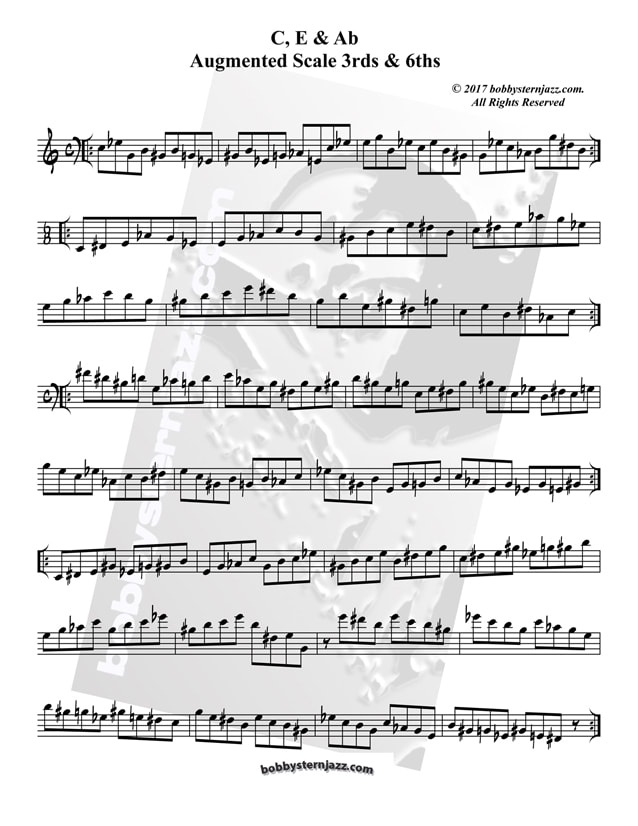
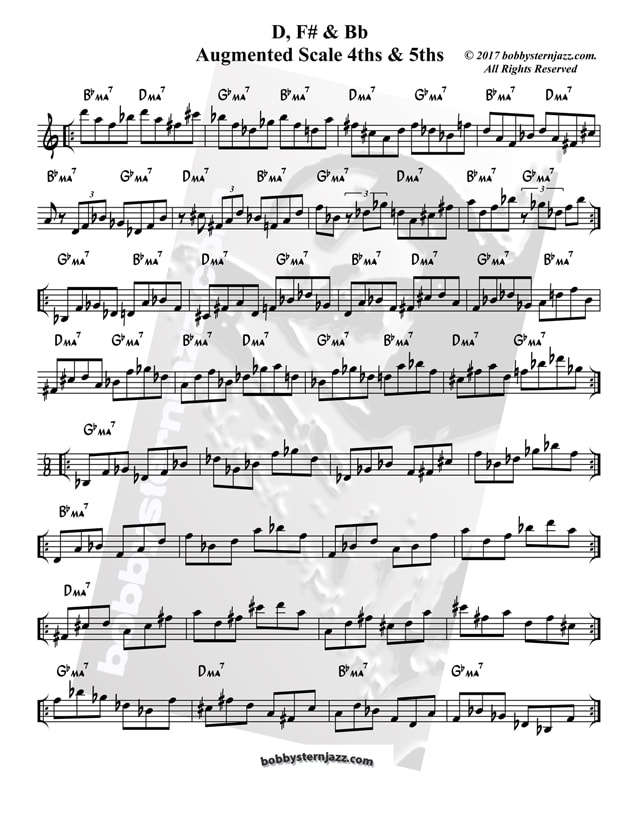

 RSS Feed
RSS Feed









